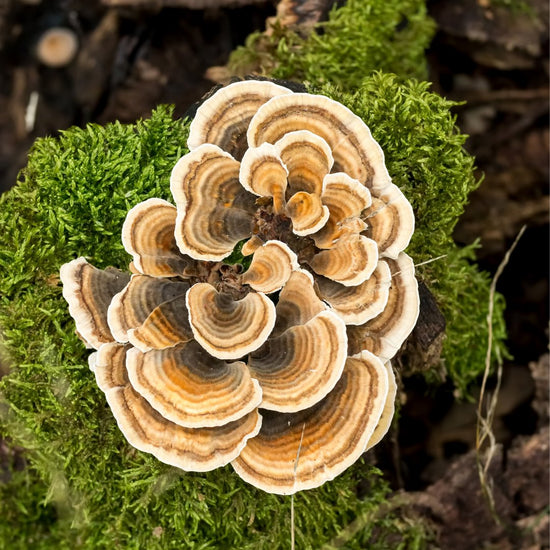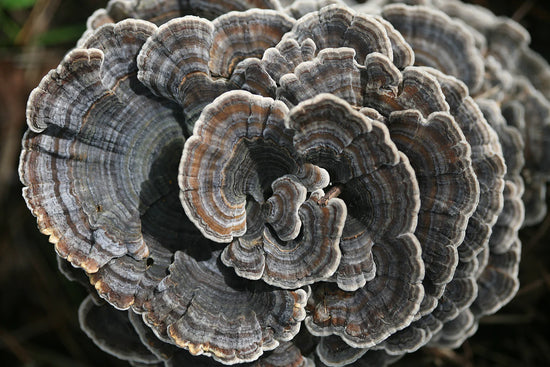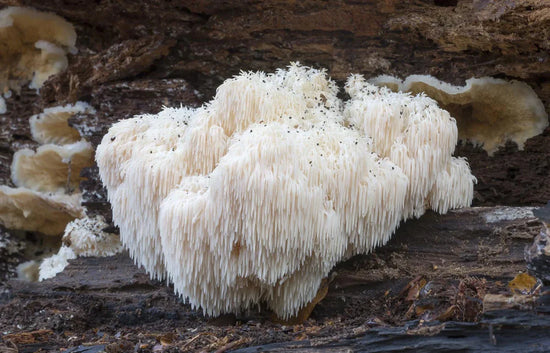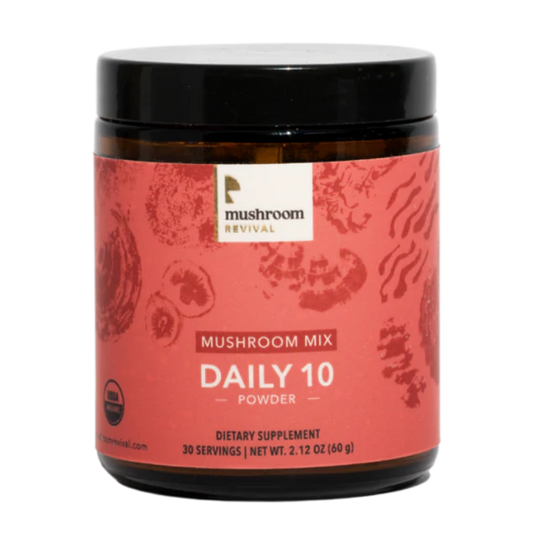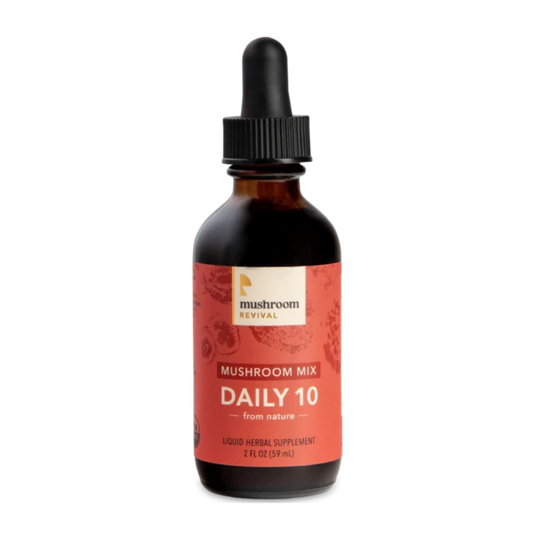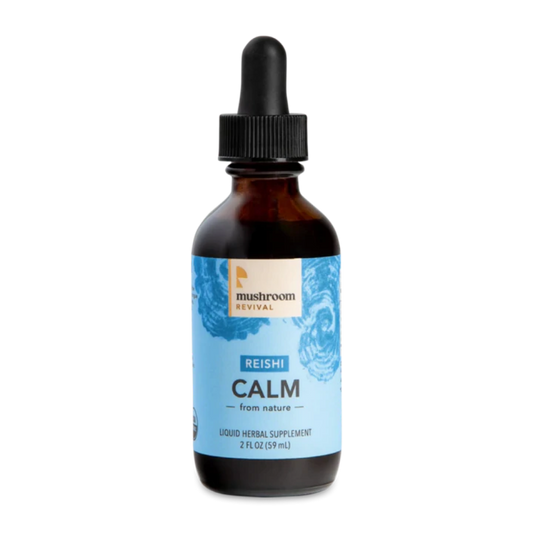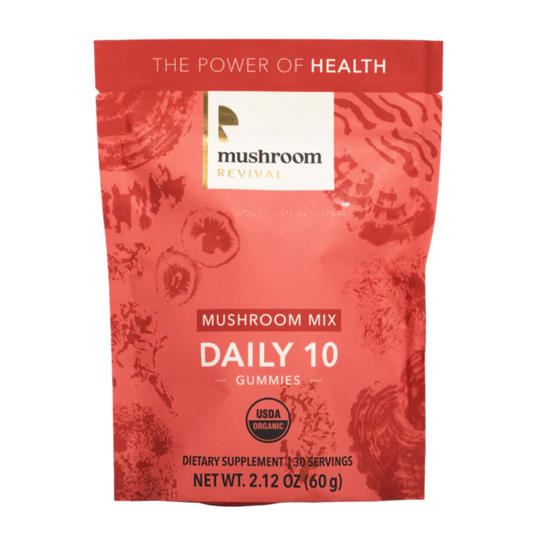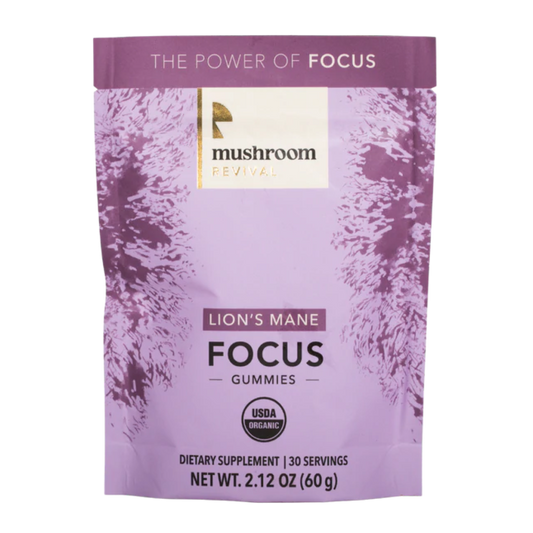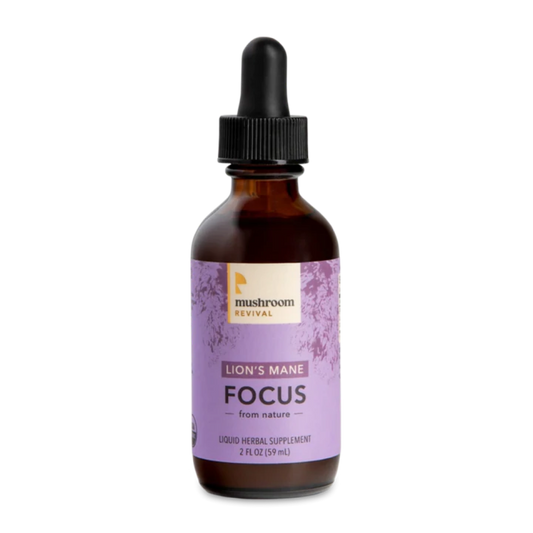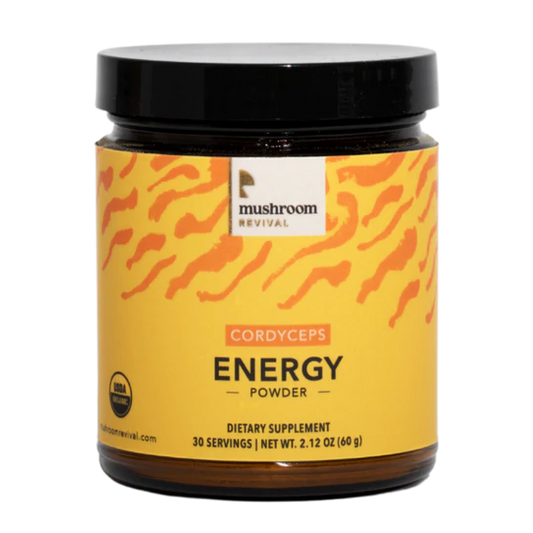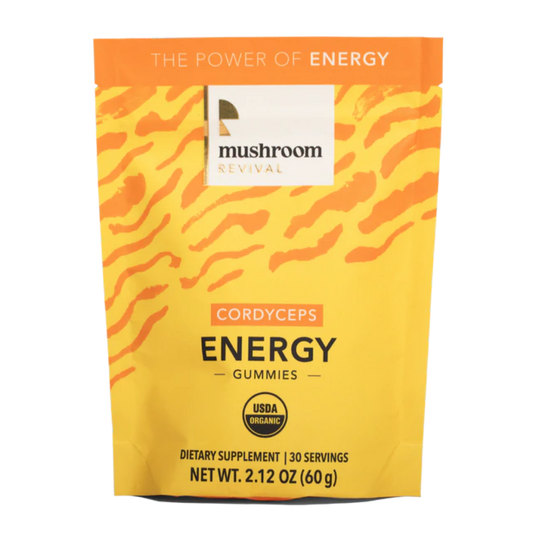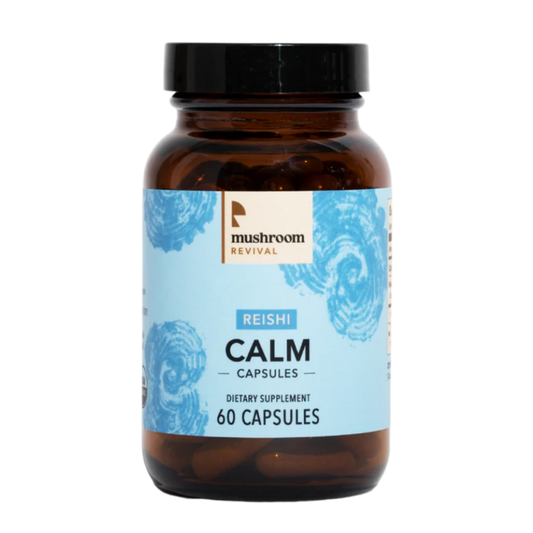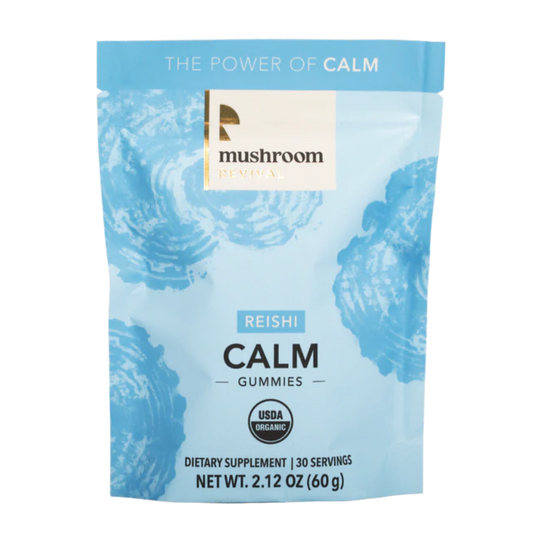The Death of Mycelium with Katlyn Beidler
Alisa Nappa
">
.js?container_id=buzzsprout-player-&player=small"
type="text/javascript"
charset="utf-8">

What happens when mycelium dies in the soil? Mycelium stores up to 70% of carbon in the soil but what happens to the carbon when the mycelium eventually dies? We explore this transformation event with Katlyn Beidler in todays episode. Tune in and Shroom in.
Sign up for our podcast giveaway here. Our next winner will be selected on October 23, 2024 and contacted via email.
TRANSCRIPT
Unknown Speaker 0:00
Alex,
Unknown Speaker 0:11
welcome, welcome. You are listening to the mushroom revival podcast. I'm your host, Alex Dorr, and we are absolutely obsessed with the wonderful, wacky world of mushrooms and fungi, we bring on guests and experts from all around the globe to geek out with us and go down this mysterious rabbit hole to try to figure out what the heck is going on with these fungal friends of ours. And today, we have Katie joining us to talk about the wood Wide Web and carbon cycling and so many interesting discoveries that we're learning about what happens underneath our soils and underneath our feet. So, Katie, how you doing? Alex, thanks for having me. Or is it? Caitlin, what are you? Katie, my name is technically Katie Lynn, but only my like mom calls me that. So Katie is good.
Unknown Speaker 1:01
Okay. Katie, where are you? I know you have ducks around you, but where are you? I am coming in from St Paul. So I'm currently working as a postdoctoral researcher the University of Minnesota, where I study how microbial communities recycle the resources contained within below ground fungal networks, and I'm really interested in how these processes contribute to soil carbon storage. Mostly just as a disclaimer, I mostly study micro fungi and dead fungal hyphae. So this is kind of more of like a hyphal revival episode.
Unknown Speaker 1:38
Love it. Great. And how did you originally get into fungi, both dead and alive. So I found fungi initially through my work with plants. After college, I got a job working in a lab that studied tree roots, mostly pine roots. Shout out to Seth Bridget at College of Charleston, and while digging around for fine roots that I needed for my work, a technique that I like to call mudgrebelin. I started noticing all these like white and yellow threads growing off root tips and out into their surrounding soil and tangling up with organic matter.
Unknown Speaker 2:14
And so I learned that the pine roots I was sampling formed these partnerships with ectomycorrhizal fungi. So getting to see the symbiosis between fungi and plants is really what made me want to learn more about fungi. So in my PhD, I went to work with rich Phillips at Indiana University, and he's sort of this expert in how mycorrhizal partnerships impact soil carbon and nutrient cycling, mostly from the plant perspective, but I've worked my way up to a pretty much fully fungal lab. We do have people that study bacteria. Shout out to achula.
Unknown Speaker 2:49
So I'm currently working for Peter Kennedy and studying the microbes that live off to King fungi. Peter's background is he's a mycorrhizal ecologist, and he's really been instrumental in getting me, sort of into fungal community ecology.
Unknown Speaker 3:05
I'm also learning some mycology on the side from Minnesota mushroom expert Anna grenade. So Anna is, like the world's most patient teacher has been teaching me
Unknown Speaker 3:17
mushroom ID, which turns out, is way harder than plant ID.
Unknown Speaker 3:22
But the more I learn about fungi, the more I'm amazed by, sort of the breadth of chemical and functional diversity that exists in the fun fungal kingdom. I think Merlin Sheldrake, in his book The entangled life, refers to fungi as like molecular masters. And I just really like that description. I think it's, it's very fitting, and sort of why I find them to be so interesting.
Unknown Speaker 3:46
Oh yeah, Merlin's such an eloquent wordsmith. It's, uh, yeah, I'm super inspired by the way he describes the universe around him. And so in such a beautiful way, he definitely is good at painting picture.
Unknown Speaker 4:01
And normally, people, including myself, have only focused on living fungi. Makes sense, and
Unknown Speaker 4:10
yeah, and most of the time it's in singularity. And I think that the juiciest parts of our universe are when things come together in symbiosis and partnership. And so I'm curious, if you want to touch upon those two things. Of, you know, what can we learn from dead fungi in community? Yeah, so
Unknown Speaker 4:31
it's, it's natural to just think about the living fungi. But I'm really interested in, like, where do those fungi go when they die? So fungi, fungal hyphy, as you know form these, or are these thread like filaments that grow extensively through soil and Purser pursuit of resources, specifically energy in the form of carbon or water and nutrients. And there can be 10s of 1000s of centimeters of fungal hyphae in just a single cubic centimeter of soil. I'm still waiting.
Unknown Speaker 5:00
For that Magic School Bus episode where Ms Frizzle shrinks down and like rides the high full highway, but
Unknown Speaker 5:06
that comes out.
Unknown Speaker 5:09
But to put that into perspective, a single teaspoon of soil there can be enough fungal hyphae to weave a fabric the size of
Unknown Speaker 5:17
an American football field. Granted, these are microscopic cells, so it's going to
Unknown Speaker 5:24
make a very sheer sort of fabric. But the hype you're constantly growing and dying and being replaced over a time span of days to months. This is a very dynamic system, and when the hype you die, they become woven back into the soil fabric, and they leave behind carbon and nutrients that can be recycled by other soil organisms. So I find this sort of material, of hyphae, very interesting as like a basis of the soil food web, and then also, like making up fragments of the soil itself, like aggregating soil particles together. And fungal necromass really just refers to dead fungal cells or residues. People also talk more broadly about microbial necromas, which is just dead microbial cells.
Unknown Speaker 6:11
So by tracking the fate of fungal necromass, we can really learn about the nutrients that sustain the soil, food web, and the forms of carbon that endure in the soil, not all carbon is created equally in the soil, and the soil carbon that's supposed to cycle the slowest or be able to persist for centuries to millennia, is in large part made up of microbial residues, or this necro mass that ends up being bound chemically to different Soil minerals like clays. And
Unknown Speaker 6:41
we know this because necromass has actually been visualized on these soil mineral surfaces, and the carbon that's bound to minerals is chemically similar to microbial cells. So we have a pretty good idea that a fair amount of this stable carbon is microbial in origin, and it's these microbial mineral interactions that really protect the carbon from additional decay. So there's the chemical bonds to the clays itself, because clays are reactive surfaces and charged surfaces that organic matter bonds to, but then that physical protection of these bonds prevents it from being decayed by other microbes in the soil.
Unknown Speaker 7:20
So before we go too in depth, I think it'd be really important to to kind of paint a picture of our
Unknown Speaker 7:28
overall carbon cycle. And this might be a throwback to middle school or high school science class, but do you want to kind of paint the current typical carbon cycle in most ecosystems or soils around it, and I feel like the more I learn about the carbon cycle like, the less I know. But it's probably useful to think about it from an ecosystem ecologist perspective. So ecosystem ecologists are really into boxes and arrows, and the boxes represent carbon pools, and the arrows generally represent carbon fluxes. So thinking about these big pools of carbon that exist in our environment, and sort of what moves that carbon back and forth.
Unknown Speaker 8:09
So there's sort of the three big terrestrial carbon pools, I think of, because I don't know anything about carbon cycling in the ocean
Unknown Speaker 8:17
is soil organic matter, so that's just
Unknown Speaker 8:21
dead plant material, wood, microbial residues, decaying animals, so just organic materials in the soil,
Unknown Speaker 8:31
both living and dead.
Unknown Speaker 8:35
That's the largest pool in the soil, and that's sort of like where all of the stable carbon is being held. But then there's also, of course, vegetation, so living plant biomass above ground, leaves and stems, things like that, and then the roots below ground. So vegetation is capturing atmospheric CO two, transferring it into the soil. When those plant materials turn over, they become soil organic matter. There's also a way in which plant roots actually release carbon into the soil through exudation, or just sort of leaking sugars into the surrounding soil environment, which is, I think, a really cool process and understudied, but that sort of can influence microbial activity and nutrient cycling, because ultimately, most microbial carbon is coming originally from a plant, either the plant litter that the microbe is decaying, or sugars that the plant is or the microbe is getting from the plant directly.
Unknown Speaker 9:32
And then there's the atmospheric pool. So we all kind of know about carbon dioxide and other gasses present within our atmosphere, and then also in the air spaces within soil. And so soils actually contain more carbon than vegetation and the atmosphere, so it's the largest pool of carbon on Earth. So it's really important to understand sort of what transforms the carbon and moves it from, let's say, vegetation, to soil.
Unknown Speaker 10:00
To atmosphere.
Unknown Speaker 10:02
And the process that I really study is decomposition, in which largely microbial organisms break down organic matter and then release CO two through respiration back into the atmosphere, or they take that carbon into their bodies and turn it into microbial carbon, and then when microbes die, that carbon then gets released back into the soil. So it's a lot of, like, circle of life cycles. And I find it's, it's fun to think about the living in the dead at the same time, and just to, like, talk about magnitude. So soils store like, 2500 pentagrams of carbon, so three times the amount in the atmosphere. And we really want that carbon to stay in the soil, like, if you think of it, kind of like a safety deposit box. You want that carbon more more locked down in the soil than readily available to be released into the atmosphere. Because humans, as you know, are burning fossil fuels. We're disrupting this carbon balance. We have an excess of carbon in the atmosphere, and also, like our farming practices and different activities can contribute to soil carbon loss in other ways. So soils are kind of like our chance at really storing this carbon, or like figuring out how to do this in a way to put things maybe back into balance.
Unknown Speaker 11:22
Right? Yeah. I'm, you know, when preparing for this episode, I've just always heard, you know, keep, keep carbon in the soil. We want to, we want to store it like a safety deposit box, like you're, you're saying. And I was thinking about, I was like, well, it is a cycle. And I, and, you know, when I was in Ecuador studying tropical ecosystems, we learned how fast carbon cycles in those ecosystems and
Unknown Speaker 11:50
in rainforests or tropical ecologies, there's very little topsoil because the carbon is constantly being cycled through just growing all these different plants, and then the plants die, and it's constantly cycling.
Unknown Speaker 12:06
But it does make sense that, you know, human interference is creating a lot more atmospheric carbon, and so, yeah, it's important to Yeah, because kind of fight against that by storm. Yeah, exactly. So there is, like, environmental context. So like in the tropics, they're way more moist, and there's more and they're warmer, so there's going to be faster
Unknown Speaker 12:30
sort of enzyme activity of microbes. So actually, like faster cycling going on
Unknown Speaker 12:37
at that enzymatic level, just because the conditions are ripe for that,
Unknown Speaker 12:42
but like, you're saying, like, most of that carbon is locked up in the vegetation, so that's why, like, deforestation is such a big deal in those tropical environments, because you're then again, releasing that carbon. So yeah, it's important to understand the context of the environment, and climate, of course, plays a huge role in that, and
Unknown Speaker 13:02
it's hard when humans are like, manipulating the climate. But
Unknown Speaker 13:07
yeah, so there's a lot of sort of ways the carbon cycle can change due to human intervention. And like,
Unknown Speaker 13:15
the sort of goal from from scientists right now is to try to figure out if we can predict what's going to happen with soil carbon in the future to try to better figure out ways of like mitigating current activities and burning of fossil fuels, but it's still sort of a big unknown, and a lot of that is because it's just hard to measure carbon cycling processes in soils. Soils are very challenging, kind of from a method standpoint,
Unknown Speaker 13:45
I actually you just made me think of something, and I didn't do enough proper research beforehand. So hopefully you know what I'm talking about. But I feel like there was a time period way back when millions, hundreds of millions of years ago, when the atmospheric carbon levels were super, super high on planet Earth. And I think it was reading something how insects were just like huge,
Unknown Speaker 14:12
and fungi were just abundant on planet Earth. And it was just like this time period, I can't remember what it was called, to think through my and
Unknown Speaker 14:20
there was just like, super high carbon levels, and all the organisms had to adapt. And so I think I remember, like dragonflies were as big as a butt.
Unknown Speaker 14:33
I don't have it in front of me, so if anyone knows what I'm talking about, but found it that is, yeah, yeah. It must have been before a lot of plants were on land because that's going to release that oxygen back and kind of take up that idea too. So yeah, and do you know, off the top of your head, I know you, you gave a metric that carbon is stored in soils three times as much as the.
Unknown Speaker 15:00
Atmospheric carbon, but how does it compare to carbon that plants take up?
Unknown Speaker 15:07
I've heard some things recently that actually way more carbon is stored in the soils by fungi, but I don't know if you have a good metric of how how they compare both, yeah,
Unknown Speaker 15:24
an order of magnitude larger than what's stored in plants. Sometimes people say, like it's more than the atmosphere and plants combined, which just refers to vegetation on land. So still more in the soil. And it's mostly in that soil organic matter. So what we're still trying to, like, figure out is sort of how much of that soil organic matter is comprised of dead fungi or living microbial biomass as well. Because it's really hard to estimate, as you can imagine, like something where the cell size is so small, trying to sort of figure out what component of the soil carbon is coming from microbes can be kind of tricky, and the methods we currently have for measuring that are not super great and oftentimes like if you use a different method, it'll give you a different answer. So there's a lot of sort of work being done,
Unknown Speaker 16:19
especially with trying to measure my microbial DNA and learn about microbial genes and sort of ways of maybe getting around, not being able to, like physically weigh microbes in soil.
Unknown Speaker 16:34
So, yeah, I think it's, it's definitely more. There's more carbon in soil than in the vegetation on Earth, but there's still, like a lot that needs to be learned about how much of that is coming from fungi specifically.
Unknown Speaker 16:51
So I'm curious, because fungi are one of the most resilient organisms on the planet. And working with different species, I mean, I used to work with Cordyceps militaris, and it used to cement very quickly, and it didn't matter how much food we gave it or resources, it would just start to slowly, kind of die off. But other species of fungi, like yeast, you know, with with making beer or bread, I feel like it's pretty much indestructible, like you could just keep flooding, yeah, it'll just keep Yeah, yeah. And so I'm curious, like, what, um,
Unknown Speaker 17:29
what? What are the main factors which cause soil fungi to die? Yeah. So there's a really nice Nature paper by Tessa kamenz that came out in 2023 and it kind of goes through like different microbial death pathways.
Unknown Speaker 17:45
But I think for like soil hype E, there can be a few different factors that contribute to senescence, and I think this is different for like mushrooms. So I'm mostly going to be talking about like the below ground part of fungi, but so changes in moisture and temperature changes in resource availability. So if sort of the nutrients are gone in your immediate environment, this hyphy, you're going to senesce faster.
Unknown Speaker 18:11
Other things are competition with other microbes, predation by other organisms. There's also a viral attack of fungal cells and soils, we're learning a lot more about soil viruses and sort of the role they play in necro mass production.
Unknown Speaker 18:29
There's also this fungi we commonly work with that's a sort of like common soil fungus called trichoderma. That's the genus,
Unknown Speaker 18:37
aka the beast. That's what my lab mate calls it. He calls these, yeah, that's the perfect yeah for it, for sure. So trichoderma, I don't know if you've seen these images, these microscopic images, but it can actually coil around other hyphy, um, and, like, choke them out there, yeah. And so a lot of times people use this as, like, a bio control agent against pathogenic fungi, because they're just, like, the fastest growing,
Unknown Speaker 19:03
like fastest sporulating fungus. So trichoderma is, like a really important decomposer in our system, but also does other things in the environment. It's the bane of every mushroom.
Unknown Speaker 19:16
Yeah, our lab is just like the green data with trichoderma, like we had a trichoderma jail for a long time, or we put cultures, and they're like, high security, so they just wouldn't contaminate their
Unknown Speaker 19:30
Yeah, for sure. That's funny. So yeah, there. There are lots of factors that can contribute to death, but sort of, one of my lab mates studied competition with trichoderma. He's got some cool papers coming out, so
Unknown Speaker 19:46
I'd love to read it. Yeah, I'd love to read them at the end about how they can access additional research from my lab.
Unknown Speaker 19:54
So when the beast comes in and kills this mycelium under the soil, or other factors.
Unknown Speaker 20:00
Is maybe tilling for agriculture or environmental changes, things like that.
Unknown Speaker 20:07
Oh, yeah, we're pretty good at it.
Unknown Speaker 20:11
So what? What happens? Then, say, other microbes digest this dead mycelium or hyphae under the soil. Then what? Yeah, so.
Unknown Speaker 20:23
And I will say, like, hypocells are pretty delicious. So they're microbes generally, like they have sort of what in we like to talk about in, like, soil carbon terms like labile versus recalcitrant, which, those might be kind of more outdated terms, but labile is just like, think of something that's like, very yummy to a microbe. It's like chemically simple and easy for a microbe to take up, like simple sugars. So fungal hyphy contain these sugars, and they also contain nitrogen, because they're made out of chitin, so they're pretty rich in nitrogen. And then there's other components of the fungal cell wall that are tougher to break down. So one
Unknown Speaker 21:01
more recalcitrant or chemically complex
Unknown Speaker 21:05
type of
Unknown Speaker 21:09
biomolecule that exists within fungal cell walls is melanin. So it's the same pigment that exists in Logan so like including humans, and it's UV protective, and it's also can protect hyphae from drying out, and it also protects them from pathogens. So you can imagine this sort of like protective function gets carried on into the afterlife. So really heavy, heavily melanized fungi
Unknown Speaker 21:35
kind of take longer to break down. There's a species, I don't know it's a ubiquitous species in soil, but sina cockam. Have you heard about sinococcum?
Unknown Speaker 21:45
It sounds very familiar. Does it? Does it attack humans? I haven't heard that. It's a heavily melanized fungi, and it's can form these sclerotia, like the sort of dormant state that can exist in soils for, like, really long times, like a really long time someone I think, Oh, I was thinking of another species. Yeah,
Unknown Speaker 22:06
there's some really cool papers out there by Chris Fernandez, who's, like the original necromaster of the lab I work in. He's currently a professor at Syracuse. Shout out to Chris Fernandez, sorry. I'm sorry.
Unknown Speaker 22:22
No, don't apologize. This is great. People like this very often. And I was like, is this I feel like I'm on a radio show, but I have to do the shadows you are. Yeah, yeah. But yeah, he, he's done some really interesting work looking at how long, like the scullery show of sino cockham can exist in these cool studies that use many rhizotrons, which are just like cameras that go down into the ground, and you can image along a clear PVC tube, and you can sort of look and see what grows into a little window of soil through time. And so there's these root tips that get heavily colonized by cenococcum. And you can see they're like wearing these little, fuzzy black sweaters, and they can persist for a really long time in these images.
Unknown Speaker 23:08
So melanins are really important control on sort of how fast or slow dead fungal materials or necromass decay in soil, but ultimately, sort of the way that we currently think carbon kind of persists the longest is when it actually gets taken up by microbes. So these sort of like more labile forms of carbon that then become incorporated into microbial biomass or microbial cells, and then those cells live in very close proximity to clay minerals or iron precipitates in soils, and then they can bind to those clays, and once again, that sort of forms this physical or chemical protection of that carbon.
Unknown Speaker 23:53
And for listeners, a fun thing to do in the woods is to actually find some of this melanized mycelium. Particularly, there's this species, commonly known as honey mushroom, but there's various Armillaria species, and the mycelium will grow up a tree, like on the outside, and create these melanized Like ropes. They look like vines of a tree. They're really far out, like if you didn't know it was mycelium, you would never guess,
Unknown Speaker 24:24
or something very impressive, yeah, they're intense and also fun fact for the listeners as well, like the fungi found at Chernobyl are also highly melanized, and they help them protect themselves a lot of radiation fungi and melanized Yeah,
Unknown Speaker 24:45
yeah. And also, for entomopathogenic fungi, or Cordyceps, quote, unquote, insects have a defense mechanism against fungi, and they will produce melanin to a.
Unknown Speaker 25:00
Like a anti parasitic formula to protect themselves against that CORDIC around, just like a super, very multi purpose out in nature. Molecule is that? Is it a molecule? Yeah, it's a larger bio molecule. Um, I also wanted to mention this work by this artist, Caitlin Bryson. She does like fungal textile art, but she had a really cool exhibit with radio trophic fungi, and was trying to grow melanized species. I think she grew some on textiles, but
Unknown Speaker 25:32
her work is really awesome and and she sort of worked with these sort of melanized fungi in the past. So if you're interested in sort of like, how like, how that, that world of Mellon I sponge, I can intersect with art, I would check out her work.
Unknown Speaker 25:50
And speaking of of your work, what, what have you felt like has been the hardest part of your work? And it can be a single moment, like a day that all your research or something, or it could be like a day to day, kind of day to day experience has been, luckily, there haven't been too many, like straight up catastrophes in the lab.
Unknown Speaker 26:13
But I think the hardest part is just working in soils. Like soils are opaque. They're extremely heterogeneous. You have to work on these crazy, like, scales of space and time, so, like, from microbial cells up to, like, bigger plant materials, and then microbes turn over really quickly that plants can grow for really long amounts of time, and then soil carbon sticks around for centuries. So it's like, dealing with all of this heterogeneity is hard. But honestly, I like that challenge because I like to sort of design methods of like, being able to actually, like track carbon in this tough environment.
Unknown Speaker 26:53
So a blessing and a curse, but I would say just like, soil is a challenging environment to work in,
Unknown Speaker 27:00
the only like, setbacks I've really had in the lab have to do with the freeze dryer. So one time the freeze dryer ruined, like, a whole batch of necro mass that I grew for like, three months, I was just like, Oh, come on. But I got over it pretty quick, you know, I
Unknown Speaker 27:15
I've always had a I've I've always wanted to see through soils. Yeah, that'd be super if there's a way, if someone can figure that out, holler at me, yeah.
Unknown Speaker 27:27
Well, I mean, you, I feel like you're
Unknown Speaker 27:32
the person that you work with that that made the see through tubes with the cameras. I feel like that's kind of a really cool way to get around the opaqueness of soils. I mean, yeah, many methods are cool. There's like, a lot more work being done to try to, like, automate them, yeah, they still sample a very, like, small they're a very small view into soil. But it is cool that that method exists.
Unknown Speaker 27:57
So this is a little bit out of my wheelhouse, but I feel like I had a conversation with Merlin Sheldrick about his research in Panama. And I'm pretty sure, and it could be mistaken, that he was using something along the lines of, what is it? GCMs? Is that? What it's called, like looking at
Unknown Speaker 28:22
No it's a now I'm blanking on the name it's, it's like, I think it's radio waves, but it's something, again, it's out of my wheelhouse. So if people are listening and they're rolling their eyes at me, trying to think of the name of it, but
Unknown Speaker 28:37
it's, I think it's radio waves that that basically bounce into opaque things, like underneath the soil. Or people have used it to
Unknown Speaker 28:48
to look for, like, old archeology digs underneath the soil, and it basically, like permeates things and then bounces back. Yeah, I know, I know. And then you can create, like, a 3d image, you know, I've seen sort of, like, it starts with a G, I think, yeah, I don't know exactly the acronym, but, um, yeah, I've seen people try to, like, essentially, like map below ground environments using radio waves, like you're saying, or I'm See, I'm gonna get This totally wrong. Um,
Unknown Speaker 29:21
but, yeah, I think that works better for things that are, like hard, or like more I just heard that's been sort of more difficult, like soft tissue things, but maybe it's good for finding, like, just general locations of, like, high root biomass or something like that. Because, I mean, course, roots can get pretty big and
Unknown Speaker 29:41
the roots the anchor trees are quite large, so maybe there's some application there for like finding areas where there'd be more or less fungi. How is he using it
Unknown Speaker 29:54
to map out the mycorrhizal network, which I thought was kind of a cool hack.
Unknown Speaker 30:00
To get around the opaqueness of soil. Is using advancing technology to kind of
Unknown Speaker 30:08
see through the soil, basically. And there's like, kind of get a Lydia map, chemical methods of doing that to sort of like, I mean, in my work, I use isotopes to trace
Unknown Speaker 30:17
the carbon that's moving, yeah. And then there's, sort of, have you heard of spun this? Like, yeah, spun is trying to map the sort of low ground world, mostly by looking at like communities of micro AZ and fungi using high throughput sequencing. So those are sort of those molecular
Unknown Speaker 30:37
DNA approaches. And then I think Toby cures uses like quantum dots in her work to see like movement of materials in fungal cells, so that, yeah, they're sort of like their methods, and they're getting more refined, and like, we're learning more than we ever have,
Unknown Speaker 30:54
but yeah, still a challenge to be Working in this opaque environment.
Unknown Speaker 31:01
And on the flip side, what has been the most rewarding part of your work? And it could be a single moment or day to day. I mean, I feel like it's just very fun to, like, get to shine a light on these environments like, I mean, I would say, like, working above ground would probably be easier. Like, I'm constantly just like laying on the forest floor, like on my belly, just like digging holes, but it's just such a cool world to me. Like, once again, the complexity and like how heterogeneous it is, like, makes it really beautiful to me. And like, all of the interaction going on across these different scales. And like, I one thing I'm like trying to learn more about are, like cross Kingdom interaction, so learning about, like soil fauna and how that might affect decomposition, or, like production of necro mass. And then also, we're starting sort of a cool collaboration with a virologist, Joanne Emerson, so we're kind of in the early days of this work, but we're like trying to essentially put out necro mass to see what viruses we can find growing on it
Unknown Speaker 32:12
or colonizing it. So sort of these, these interactions
Unknown Speaker 32:18
that sort of made me want to become an ecologist, and then, sort of like the complexity of the soil environment is is kind of what hooked me for becoming a below ground ecologist.
Unknown Speaker 32:32
So I'm so curious to get your perspective on this. I feel like there's kind of two main camps when it comes to AI and virtual reality, and I feel conflicted all the time about it, but I did see this really cool video about
Unknown Speaker 32:49
some of the use cases for AI and virtual reality, and one of them was education, and they gave all these different case studies of,
Unknown Speaker 32:59
you know, surgeons learning surgery, and they're able to jump on a call with with top surgeons from all around the world, and basically do, like, a virtual reality surgery, to learn all these cool things without an actual body. And then other things were like,
Unknown Speaker 33:17
if people were microbiologists, they can, like, see really,
Unknown Speaker 33:21
really really small things. Or if they're, they study astronomy. They can, you know, zoom out to planets in or history. They can go back to ancient Rome and see a virtual like lockdown. So, like, sort of ancient Rome's across. So I bring that up,
Unknown Speaker 33:38
yeah. So I bring that up is, like if they were to create a program where you could put on some virtual reality goggles or whatever, and kind of have that magic, magic school bus experience of exploring underneath the soils in a less opaque setting, and kind of interact with these hyphae, both dead and alive, and microorganisms and trike and things like that. Would you be into that idea? Or you kind of,
Unknown Speaker 34:06
I know that the argument against it is it kind of creates a Socrates Allegory of the Cave scenario where people are like, that's not real. Yeah. And they're like, You need to actually get into the soil. It's a much different experience. Personally, I think, like the digging and like being in the soil is very important,
Unknown Speaker 34:29
but maybe that's just my bias, and, like, not super strong knowledge about how to use AI effectively, but it would be cool. I mean, I do think about, like, shrinking myself down and like, sort of what it would be like to, like, go through these soil pores or, like, see, like, a happening biofilm. So I think it's an interesting thought exercise. And there are people that like, make or model soils
Unknown Speaker 34:54
and sort of use these like, because it's really hard to understand, like, poor connectivity and things like that in soil.
Unknown Speaker 35:00
Unless, sort of you start from like, this model soil standpoint, and can be like, okay, like, how does this change? The airspace is in the soil, if we, like, manipulate the water in this way or something. So I think it can be like a useful tool, like any sort of modeling can be scientists use models all the time. But of course, models are like imperfect, and I think, like, my favorite thing to do is, like empirical work. And like, mostly like manipulative experiments. So I like to, sort of like, break things and figure out, like, how, how things connect. And to me, like bench work and like, more of like, the sort of like tactile experience of doing science, and like the hand skills and things I get from doing it are, like, very satisfying. So I think, like, I'll still probably exist in the dirt, but I'm like, happy to sort of use those tools. Or, like, if people are more interested in modeling, like, it's really fun to talk to modelers to learn more about, like, how math applies to like, my my system,
Unknown Speaker 36:02
right? So, total side tangent. Funny question. You know what a tardigrade is, right? Yeah, very cute. Tardigrade is very cute.
Unknown Speaker 36:12
Okay, yeah, okay. So
Unknown Speaker 36:15
if you were to shrink down to the size of a tardigrade, do you think it would still be cute, or do you think they are kind of like scary, you know, actually one of Jason's awesome, a member of my lab, Bonnie. She also is an artist, but she does a lot of, like, art that merges tardigrades and Furbies, and it's coming out. Oh, okay, you gotta clarifying, but awesome at the same time. So that the tardigrade Furby is actually kind of a mask out of our lab right now, that's the question I would want to ask her. I would be like, if you could get on the level with this tardigrade, would you like it? I mean, I feel like it'd be scary to be that small, but sometimes when I think about space, I'm like, Yeah, there'd be a lot of things
Unknown Speaker 36:58
trying to eat you, for sure. I mean, they're so cute, but I feel like their mouth is terrifying, scary.
Unknown Speaker 37:05
They remind me of, like, the dune. Oh yeah. Have you seen the movie? That movie could have used more of the I would try to ride it. Yeah, the grade, for sure. Yeah. We're still trying to figure out if I was a soil explorer, yeah, that's, yeah. That would be, I think, ideal, if you could just zip around. Well, that's actually how, like, viruses get around in soil. So there is some truth to that. On the backs of target backs of like nematodes and like different soil fauna, so they like, actually how they're riding that worm. Like, I think there's like, a
Unknown Speaker 37:35
Bio Archive paper that is, like, supposed to be published in Science soon. Maybe it's a little crazy. It got picked up by, like, science news, but it's about, it's like, dune themed, and it's about how viruses sort of, like, hitch a ride onto nematodes and other wormy things in the soil to kind of disperse. Wow, yeah. Well, I've actually seen videos. I don't know if you've seen those videos of bacteria doing the same thing, but they do it around, like the hydrofilm layer around my skin. That's sort of that hyphal Hyatt ways idea where microbes are, like ripping along hyphal surfaces.
Unknown Speaker 38:12
But yeah, there's, it's a wild world outside soil, like there's still so much to learn about interactions across kingdoms.
Unknown Speaker 38:21
Do you have a this might be a really hard question, or maybe really easy, but do you have a favorite soil fungi? That's like, good question. I feel like I'm just like, down with general soil sapper trips, you know, like, I like the working man spray guy out there. Um, yeah, but yeah, I don't, I don't know. I feel like I like,
Unknown Speaker 38:42
I do have some favorite mushrooms now. Like, I really like the mycenoid mushroom, like the cute little so my, my mycologist instructor, Anna, is very she's all about the sort of forgotten small fungi, and she likes to try to identify LBM. So
Unknown Speaker 38:59
that's, that's sort of a new world to me. I'm learning about, but that's a Sisyphean task, right there. Yeah? Lbms, or she's, like, she likes the challenge, but I love the she likes the challenge, so it's fun to learn from her. Because I'm like, it would probably be easier if I could just learn like, five edible fungi, but I'm going for the tough ones with Anna,
Unknown Speaker 39:19
yeah. Love it
Unknown Speaker 39:21
so bigger question,
Unknown Speaker 39:26
and again, might be really easy or might be really hard, but if you had unlimited resources, time, equipment, team,
Unknown Speaker 39:36
all the bells and whistles in your lab, what would you do and why? Yeah, so I mentioned a little bit of how I use isotopes, which is, people might remember from chemistry, our
Unknown Speaker 39:49
elements was just one extra neutron, so carbon 12 is really abundant in the environment, but carbon 13 sort of like the rarer form. So you can actually buy a.
Unknown Speaker 40:00
At different chemicals that are sort of more enriched in carbon 13.
Unknown Speaker 40:06
So I would probably like go ham on cambridgeisotopes.com and just buy, like, a bunch of 13 C labeled sugar and then grow a bunch of isotopically enriched necromance so that I could just like, put that necro mass out at a bunch of networked sites, and just like, measure a million soil factors, because it's really hard to take. So in necromance, as you can imagine, like these cells are pretty small, so it takes a long time to generate the actual mass. So it would be cool to, just like, have endless amounts of necromance to experiments with.
Unknown Speaker 40:40
And then also, like, going back to the Mini rhizotron conversation, just having like, these huge rhizotrons, or like windows into the ground and all these different ecosystems. And like getting to see things come in and come out would be pretty cool. But I feel like that would be like a lifetime's worth of work.
Unknown Speaker 41:00
And I also, I love the rhizosphere. Such a cool environment. I wish I had more time to study sort of like dynamics in the rhizosphere. So there are lots of things that I still need to do.
Unknown Speaker 41:14
Wow. What a boring birthday wish list.
Unknown Speaker 41:19
Cambridge, Cambridge, Cambridge has like, a 10% sale right now. So I think they're like, in on it. They're like, come on, spend that money.
Unknown Speaker 41:30
Yeah, yeah. I feel like you have the funniest conversations with with people, maybe in your family, or, I don't know if you have friends that are just not into fungi or whatever, and comparing your wish list for things you want. And you're like, Yeah, Cambridge, yeah. My family just knows. They're like, oh, I want a new purse or something. And you're like, No, I want these isotopes. We've got to figure out what's going on with these fungi. But yeah, my my family, like, I can tell when their eyes start sort of like, glaze over, and then I'll just like, oh, yeah, totally. But they're, they're into it. They like, they like the fungi slowly over time. And I do feel like fungi are having like a moment. So people are kind of like, it's fun to hear people sort of bring it up. Um, beyond that HBO show that I talked about, that I still haven't seen, about fungi, like eating people or something you haven't seen the last of us. Oh, it's so good. It's so good. I personally love Cordyceps, so I'm a huge Okay, so then just scrap everything I said, and I'll just get HBO account and just watch that. That's on the wish list.
Unknown Speaker 42:29
Okay, yeah, either or, you know, either or
Unknown Speaker 42:34
no. Highly recommend it. It's really, really good, yeah, yeah, that super great, yeah. I know a lot of people didn't like it, because,
Unknown Speaker 42:44
just like you were saying, there is an importance to kind of making mushroom sexy, or making fungi sexy now, because they have had a lot of like, propaganda against them, and there are a lot of microphobic countries and people that are just, like, really grossed out by them or afraid of them. And I feel like a lot of people push back on the show because they're like, Oh, this is just further. It's kind of like in Shark Week making people when they just, like, make people scared of sharks. Totally,
Unknown Speaker 43:17
yeah. But I, I'm like, a huge fan of Cordyceps, and, like, I don't I thought it was great, yeah, also, probably the only person in that camp humans. You might not like fungi, but the fungi are gonna still be here. So the cool thing is, like, fungi don't care.
Unknown Speaker 43:34
They don't care about the human. No, not at all. Yeah, they don't care. So speaking of humans, and how we're always kind of messing up the grand ecosystem plans.
Unknown Speaker 43:45
You know, we're getting more and more soil in our atmospheres. We need to store more carbon in the soils. Can you just kind of give a brief moving forward
Unknown Speaker 43:57
recap of maybe what we can do both at home, you know, like on a personal scale, but also globally, like, where, where do you hope to see
Unknown Speaker 44:08
carbon capture in the next, like, 550, years? What are, what are like the most important things that we could do?
Unknown Speaker 44:16
Yeah, it's a hard thing because we're just like, sort of one. It's hard because it's like a global scale problem, but we're all individuals, and it's easy to sort of feel defeated when to like, a lot of these things have to come through policy changes and like that can mean a lot of different things for a lot of different places. But honestly, like, reforestation is a pretty simple one, like just sort of planting trees and places, there's a lot of like, at least in the Midwest, there's a lot of like, farmland that's currently not as like used, so maybe, like, turning that back into forest like it's been, has been done. On the East Coast,
Unknown Speaker 44:55
there's lots of like, policies that we could be enacting to sort of limit CO two and.
Unknown Speaker 45:00
Missions. And I don't know, it just totally depends on, like, where people are living, and the sort of speed at which humans are working on that is kind of disheartening at times. But I think as individuals, like,
Unknown Speaker 45:13
just sort of being mindful that, like, having healthy soil is really important for a planet, beyond carbon storage. It's also for food productivity. So like, just being aware that there are certain practices in our agriculture that are better or worse, and like, maybe looking into those things, I feel like I'm getting kind of preachy. But also a simple thing is just like, if you can compost, if you can compost at your house, or, like, get rid of food waste that way, and you can have your own little soil carbon experiment going
Unknown Speaker 45:42
with your own organic matter, but yeah, there's it's a tough one. It's a tough one to sort of figure out what we can do and still feel like we're enacting change or in control of a very global
Unknown Speaker 45:58
problem. So I don't know, take the bus, like, if you can get on that bus, Magic School Bus,
Unknown Speaker 46:09
I love it, or whatever, whatever transportation require, where maybe someone else can hop on and try it out.
Unknown Speaker 46:18
Yeah, love it. And I'm guessing there's no books on dead fungi inner soils, but maybe I'm wrong, but I'm curious, where can there's some cool sort of fungal carbon books I think Springer has,
Unknown Speaker 46:34
yeah, maybe I can give you like a list of those after
Unknown Speaker 46:38
the podcast. Yeah, please. It's done, please. Yeah, that'd be great. Yeah. Most of them are sort of, like, it's so hard. There's so many, okay, go on. Just most of the books that come out are, like, people who are working in these fields, like, usually, like in academia, that are like, then put things into, like, right? More of a textbook, um, but yeah, there's, sort of, there's great resources.
Unknown Speaker 47:05
I just had someone on who studies marine mycology, so cool, and I asked her the same question, or them the same question, and they're like, yeah, there's, there's nothing really, yeah. And I have that a lot like interviewing people who study niche topics, and they're like, yeah, there's, there's a couple of papers out there, there's like, me and a couple of researchers, and that's, that's about it. And it's always, yeah, it's, it's cool, bridging that gap
Unknown Speaker 47:33
in this kind of new mushroom loving phase that we're in. I'm so excited to see, like so many new documentaries coming out, and books and so many people taking these really beautiful interactions with biology and curating it to Joe Schmo out there, and making it like this sexy experience like that, they can dive into this world and be enamored by it. And I think that's really important, totally all all different members, to come together and create, like, a holistic view and appreciation for for the world around us, little and small, dead and alive. Totally agree. And one thing I really have found satisfaction with in my work is sometimes artists will like, reach out and collaborate with me, and it's really helpful to have sort of their viewpoints and, like, the way they observe sort of this, once again, like opaque world and like interpreting that for people. So I'm I always love working with artists. And if there's like, anybody who's like, wants to, like, learn more about necro mass or or do some collabs, um, please hit me up.
Unknown Speaker 48:43
Okay, so where can people follow your work? Where can people get in contact? So I have a personal website that's sort of the best way. I don't really have social media, but it's k and then v, because my middle name is Victoria, and then Beidler, my last name.com
Unknown Speaker 49:00
so I can sort of pass that link along. And then also the Kennedy Lab, which I'm currently working in. If you just Google Kennedy lab, University of Minnesota or UMN, there's our lab website, and that has links to, like, a whole bunch of really awesome fungal ecologists working on things from how mycorrhizal fungi are responding to global change drivers. So my lab mate, Nisha, does a lot of cool work on that, and like is trying to also track that with soil carbon. Ani, the tardigrade artist,
Unknown Speaker 49:30
does a lot of similar can and studying necromance decomp in sort of more like warmed soils that are projected for the future. Talia micheaux is a really great fungal ecologist who uses isotopes to sort of measure the substrates that mushrooms use throughout time. So she uses these, like herbarium collections of fungi to study different sources of carbon and nitrogen that the fungi are using to make mushrooms. So.
Unknown Speaker 50:00
So we have a lot of and then Atla is awesome. She studies like, fungal bacterial interactions on necro mass, and sort of this more like community aspect to decomposers and how, like, the diversity of that microbial community affects decomposition. So my work is really just a tiny piece of like a whole puzzle that's sort of coming together. And of course, it's obviously being produced by my boss, Peter. So some really cool work there and then that will sort of also link you to different publications, either through my website or the lab's website, which is one way to get around, sort of like there not being a book,
Unknown Speaker 50:43
I love it, and thanks for shouting out all these amazing individuals. Really sweet of you to do. So, I mean, I feel like, yeah, I learned so much from the people around me, and they have to be acknowledged via very weird shout outs.
Unknown Speaker 51:00
Well, thank you for coming on. I really appreciate it, and this has been really amazing. And I hope this seeps into my dream world tonight, and I have a Magic School Bus type dream exploring the cells. Also shout out to necromance, the Italian metal band. So that might be something
Unknown Speaker 51:20
I don't know if you're interested in other types of necromass. They make really amazing stickers, but yeah, necro mass can go a few ways. Hopefully your dreams are pleasant. Love it.
Unknown Speaker 51:31
Love it. Thank you, and thank you for everyone tuning in and true me, in for another episode of the mushroom revival podcast. We can do it without you. So we're super grateful wherever you are tuning in from around the world,
Unknown Speaker 51:46
if you like the show you want to support. We don't have a Patreon or any way that you can donate monetarily directly, but we do have a mother brand, mushroom revival. We have a whole line of functional mushroom products, from gummies, tinctures, powders, capsules, all certified organic, and we do plant a tree for every product that we sold. And we've so far planted over 133,000
Unknown Speaker 52:10
trees all around the world, which is awesome. I We also are huge fans of trees, and think everyone should plant more trees. I think it's huge for the carbon cycle. And trees are just amazing in a million different facets. But check that out. If you don't want to spend any money, we have a giveaway going on. Link is in the bio. We pick a winner. Once a month, you can win some mushroom goodies. If you do want some some goodies, we have a special discount code just for listeners, and that code is pod treat for a special surprise discount code. We also have a bunch of like, free ebooks that you can download on cooking with mushrooms, microdosing, you name it, ecology of mushrooms,
Unknown Speaker 52:57
and a ton of blog posts on there as well.
Unknown Speaker 53:01
But yeah, keep spreading the word. Keep making cool connections with people that are into biology and mycology and really cool niche things, and spread the word. If you learned something cool in this episode or a different episode, tell a fun fact to a friend, a stranger, a family member, and keep this mycelial web growing and as always, much love amid the spores. Be With You. Thank You. You.
Transcribed by https://otter.ai







